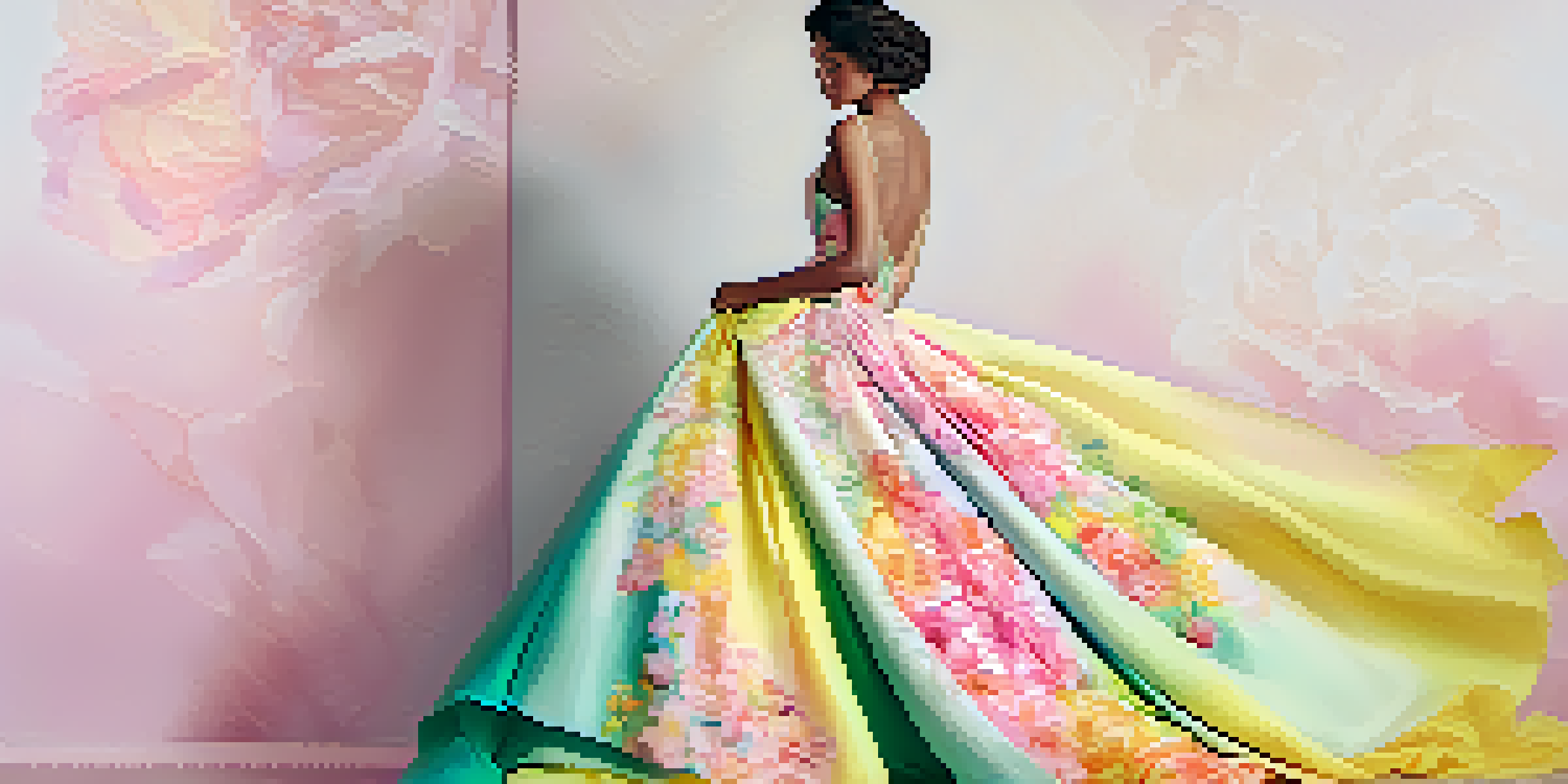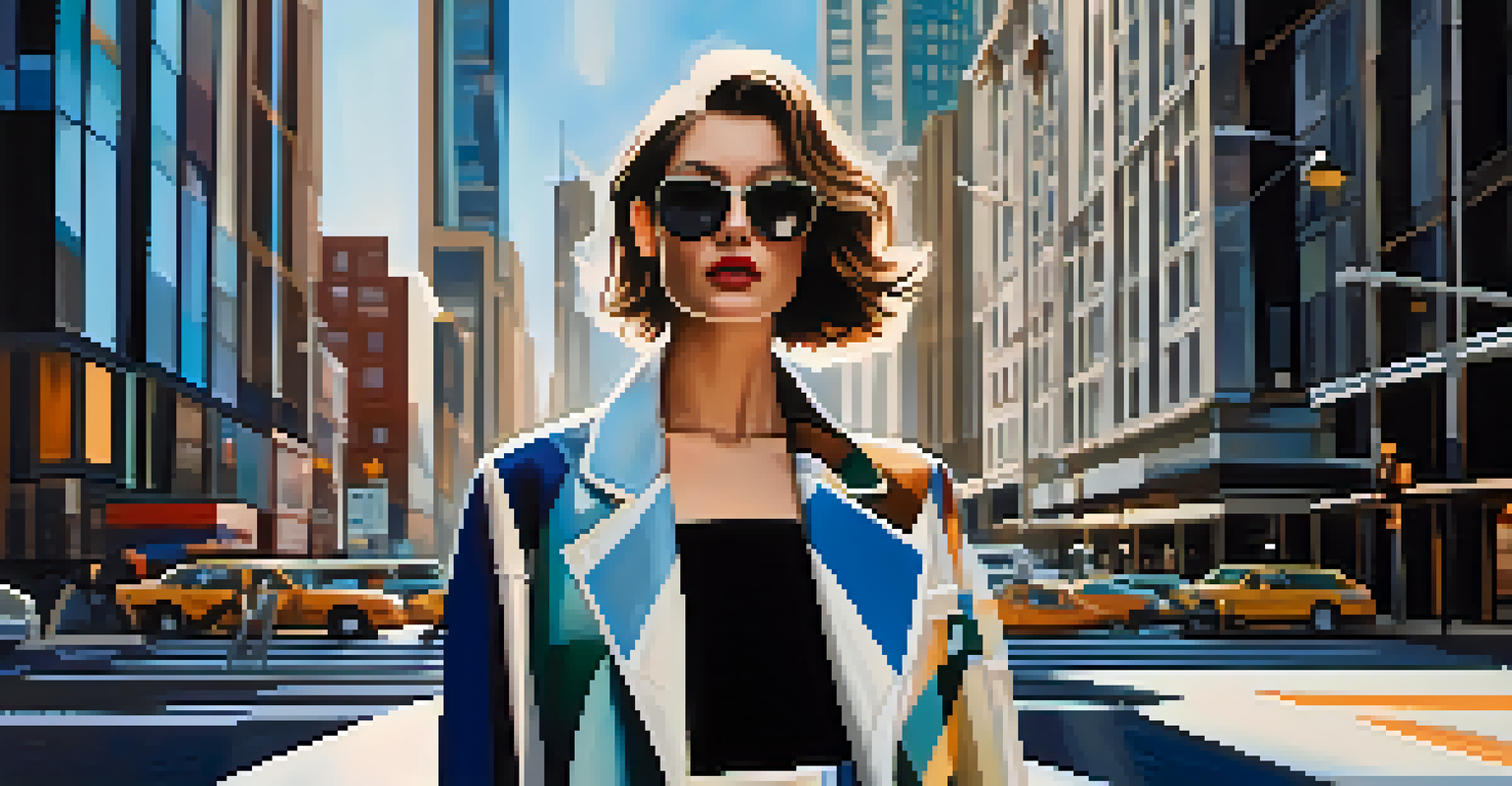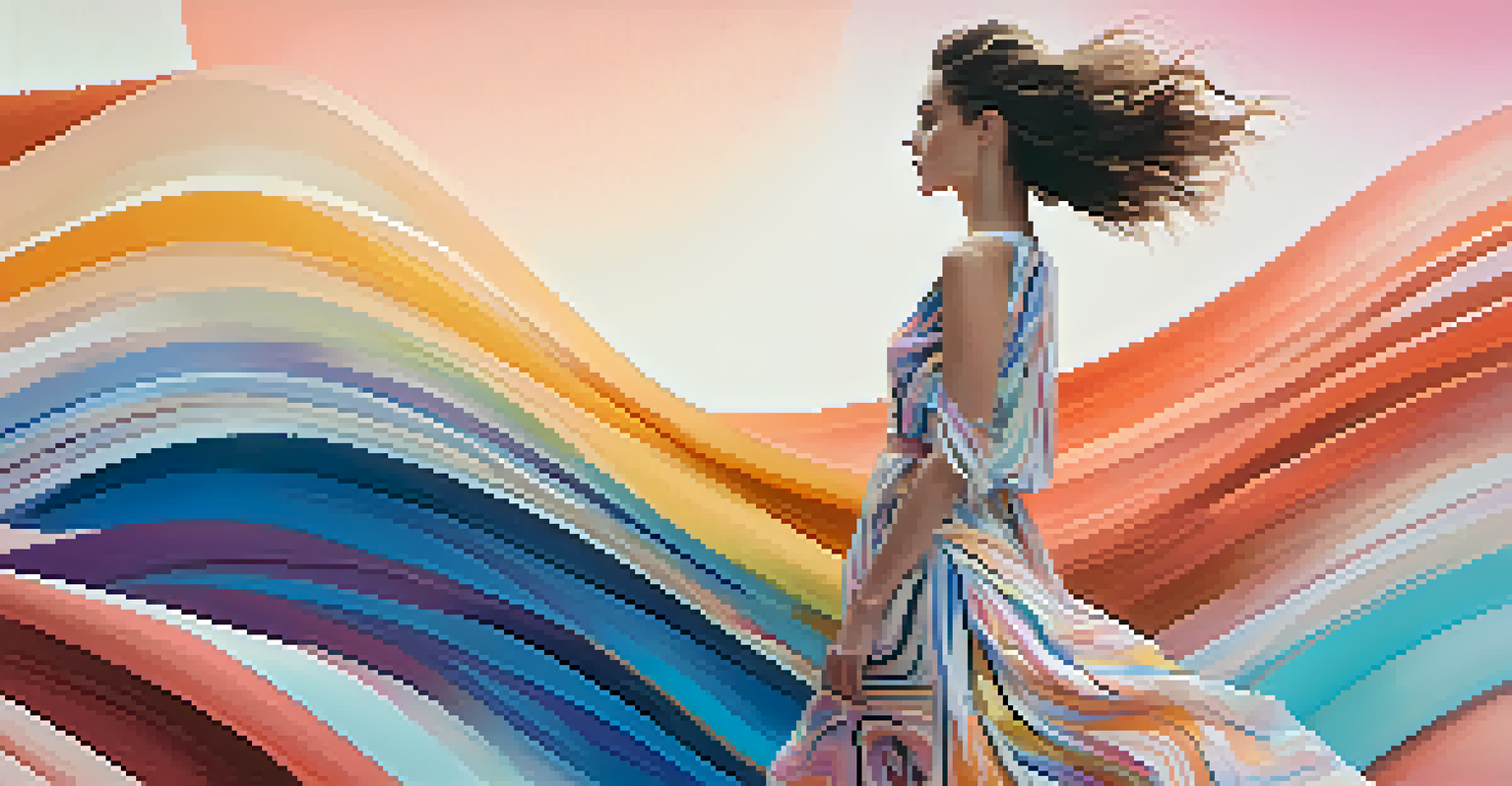Fashion Illustration vs. Fashion Photography: Key Differences

Defining Fashion Illustration and Photography
Fashion illustration is the art of drawing or painting clothing and accessories, capturing the essence of style through artistic expression. Artists use various mediums, such as pencils, watercolors, or digital tools, to create unique representations of fashion. In contrast, fashion photography involves capturing real-life images of models wearing designer outfits, often in visually striking settings.
Fashion is the armor to survive the reality of everyday life.
Both forms serve to showcase fashion, but they do so through different lenses—one through imaginative artistry and the other through photographic realism. While illustrations can convey emotions and moods through exaggerated forms and colors, photography aims to present a more authentic depiction of fashion. Each medium has its own strengths and appeals to different audiences.
Ultimately, understanding these definitions sets the stage for a deeper exploration of how each medium influences the fashion industry. Whether you’re drawn to the whimsical nature of illustration or the captivating quality of photography, both play integral roles in how we perceive style.
Creative Process: Artists vs. Photographers
The creative process for fashion illustrators often begins with brainstorming concepts and sketching ideas. These artists rely heavily on their imagination, interpreting trends and styles in a way that reflects their unique vision. They can manipulate proportions and colors to evoke specific emotions or themes, allowing for a level of creativity that feels limitless.

On the other hand, fashion photographers work with real models and environments, focusing on capturing the perfect shot. Their process involves scouting locations, setting up lighting, and often collaborating with stylists and makeup artists to ensure a cohesive look. This hands-on approach requires a different skill set, emphasizing technical proficiency and timing.
Illustration vs. Photography Defined
Fashion illustration uses artistic expression to depict style, while photography captures real-life images of models wearing designer outfits.
While both artists and photographers are storytellers, their approaches differ significantly. Illustrators often create a narrative through visual exaggeration, while photographers tell their stories through candid moments and carefully composed images, each appealing to different sensibilities in the audience.
Artistic Style: Imagination vs. Reality
Fashion illustration is a playground for the imagination, allowing artists to experiment with colors and forms in ways that defy reality. This freedom means that illustrations can capture the essence of a fashion piece without being tethered to its physical limitations. Illustrators often stylize their work to highlight the beauty of the garments, sometimes exaggerating features to make a statement.
Fashion is about dreaming and making other people dream.
In contrast, fashion photography is grounded in reality, aiming to showcase clothing as it is worn in real life. Photographers capture the interplay of light, texture, and movement, often creating an environment that enhances the garments. The challenge lies in translating the designer's vision into a moment that resonates with viewers, all while ensuring authenticity.
This divergence in artistic style leads to different viewer experiences. While fashion illustrations evoke fantasy and personal interpretation, photography grounds viewers in the tangible world of fashion, making it relatable and often aspirational.
Purpose and Audience: Who Are They For?
Fashion illustrations often target a niche audience, including designers and artists who appreciate the creative process behind fashion. These artworks can serve as mood boards or conceptual pieces, communicating ideas that may not yet exist in the tangible world. The audience for illustrations is generally those who seek inspiration and a deeper understanding of fashion as an art form.
On the flip side, fashion photography appeals to a broader audience, including consumers who are interested in trends and the latest styles. It's often featured in magazines, advertisements, and social media, providing a direct connection to the fashion industry. This medium aims to inspire purchases and engage viewers by showcasing how clothing looks in real life.
Creative Processes Differ
Illustrators rely on imagination to create unique representations, whereas photographers focus on technical skills to capture authentic moments.
Understanding the purpose and audience for each medium allows brands and artists to tailor their messages effectively. While illustrations cater to those who appreciate creativity and artistry, photography serves those looking for real-world applications of fashion.
Influence on Fashion Trends: How They Shape Styles
Fashion illustration has historically played a significant role in shaping trends, especially in the early 20th century when artists like René Gruau and David Downton captured the essence of couture. Illustrators can introduce bold ideas and avant-garde concepts that challenge conventional fashion, often inspiring designers to push boundaries. Their unique perspectives can ignite movements, making illustration a powerful tool in the fashion narrative.
Fashion photography, particularly in the age of social media, has become a driving force in trendsetting. Influencers and photographers collaborate to create visually stunning imagery that can go viral, making specific styles and brands popular overnight. This immediacy and accessibility mean that photography can rapidly influence consumer behavior and shape what is deemed fashionable.
Both mediums are essential in the fashion ecosystem, but they influence trends in different ways. Illustrators provoke thought and creativity, while photographers capture the zeitgeist, reflecting current trends and making them accessible to the masses.
Technical Skills: What Do Artists and Photographers Need?
Fashion illustrators require a strong foundation in artistic techniques, such as drawing, painting, and digital design. Mastering these skills allows them to manipulate visual elements to create compelling representations of fashion. Additionally, understanding color theory and composition is crucial in effectively conveying their artistic vision.
For photographers, technical skills involve a mix of artistic sensibility and technical knowledge of camera equipment, lighting, and editing software. Photographers must know how to frame a shot, manage lighting conditions, and often edit images to enhance their final presentation. This skill set allows them to capture the intricate details of fashion in a way that appeals to viewers.
Influence on Fashion Trends
Both mediums shape fashion trends differently, with illustrations provoking creativity and photography reflecting current styles and consumer behavior.
While the skills may differ, both artists and photographers share a passion for fashion and storytelling. Their dedication to their crafts allows them to create captivating visual narratives, each using their unique tools to bring fashion to life.
Future Trends: The Evolution of Fashion Visuals
As technology advances, both fashion illustration and photography are evolving, leading to exciting new trends. Digital tools and software allow illustrators to create more dynamic and interactive pieces, incorporating animation and augmented reality elements. This evolution invites viewers into a more immersive experience, where fashion comes alive in ways previously unimagined.
In photography, the rise of social media has transformed how fashion is shared and consumed. Platforms like Instagram and TikTok have given rise to new visual styles, where spontaneity and authenticity often take precedence over polished images. This shift is pushing photographers to adapt their techniques to cater to a more engaged and visually-driven audience.

Looking ahead, the blending of illustration and photography could lead to innovative storytelling methods in fashion. As both mediums continue to grow and influence one another, we can expect to see even more creative collaborations that redefine how we view and experience fashion.